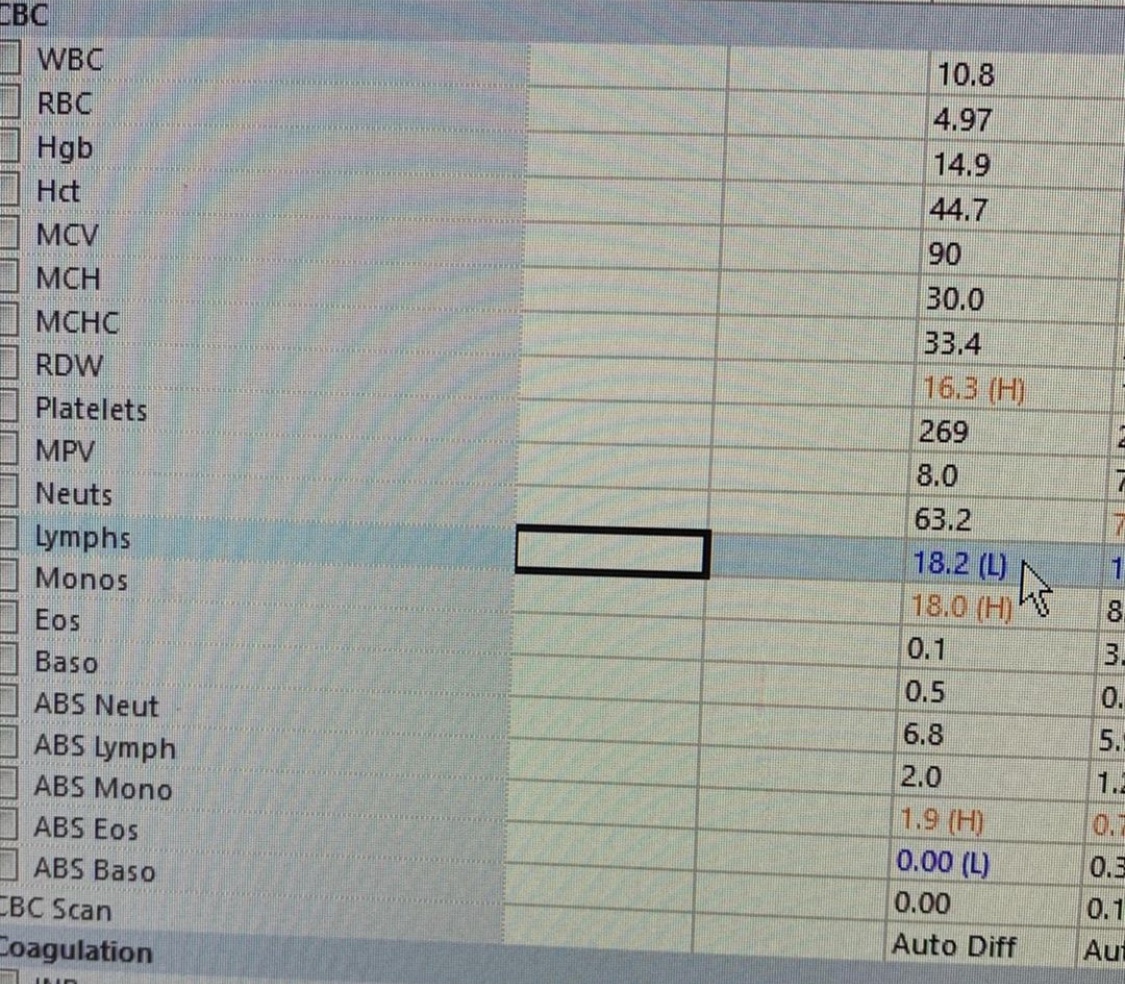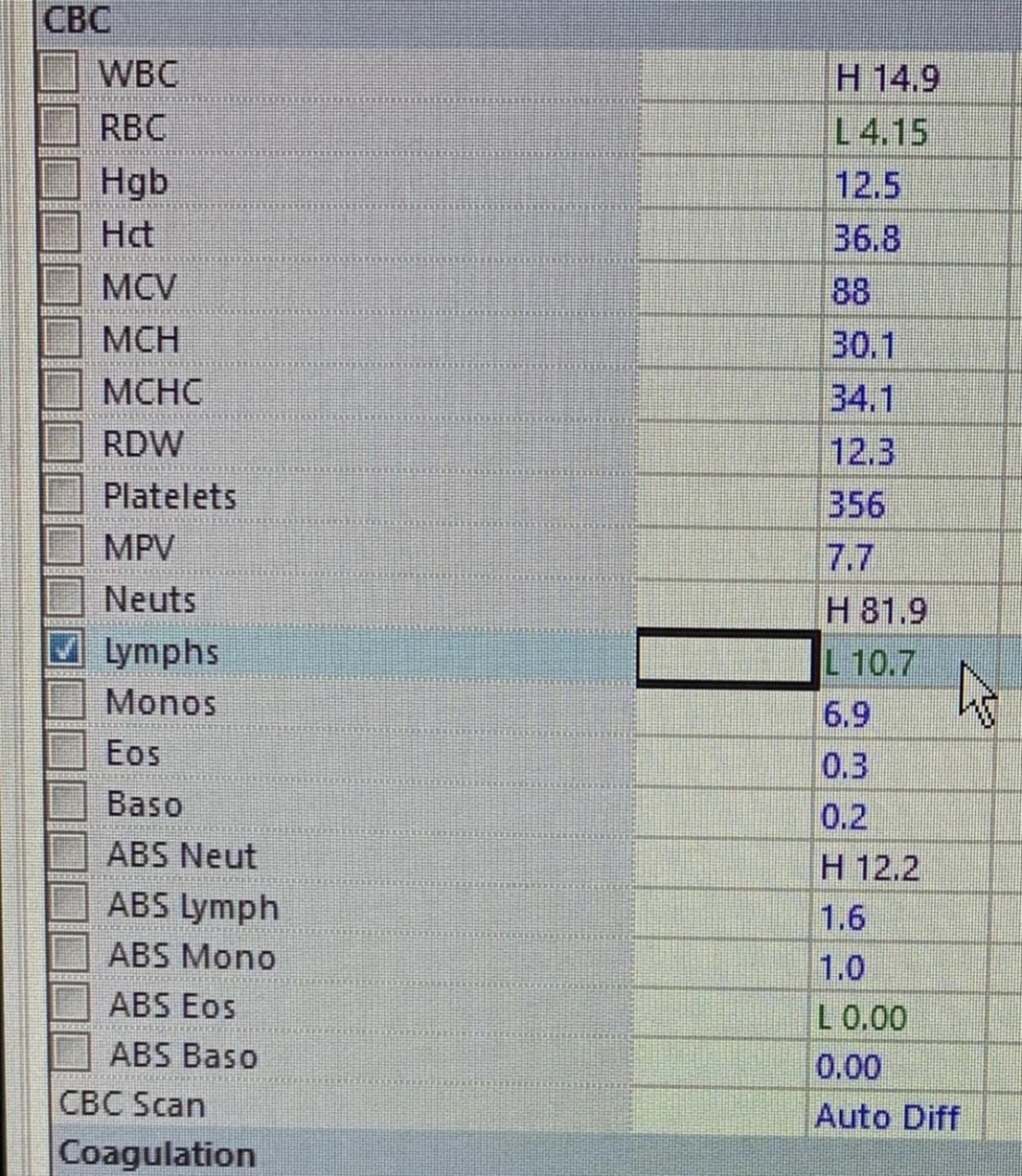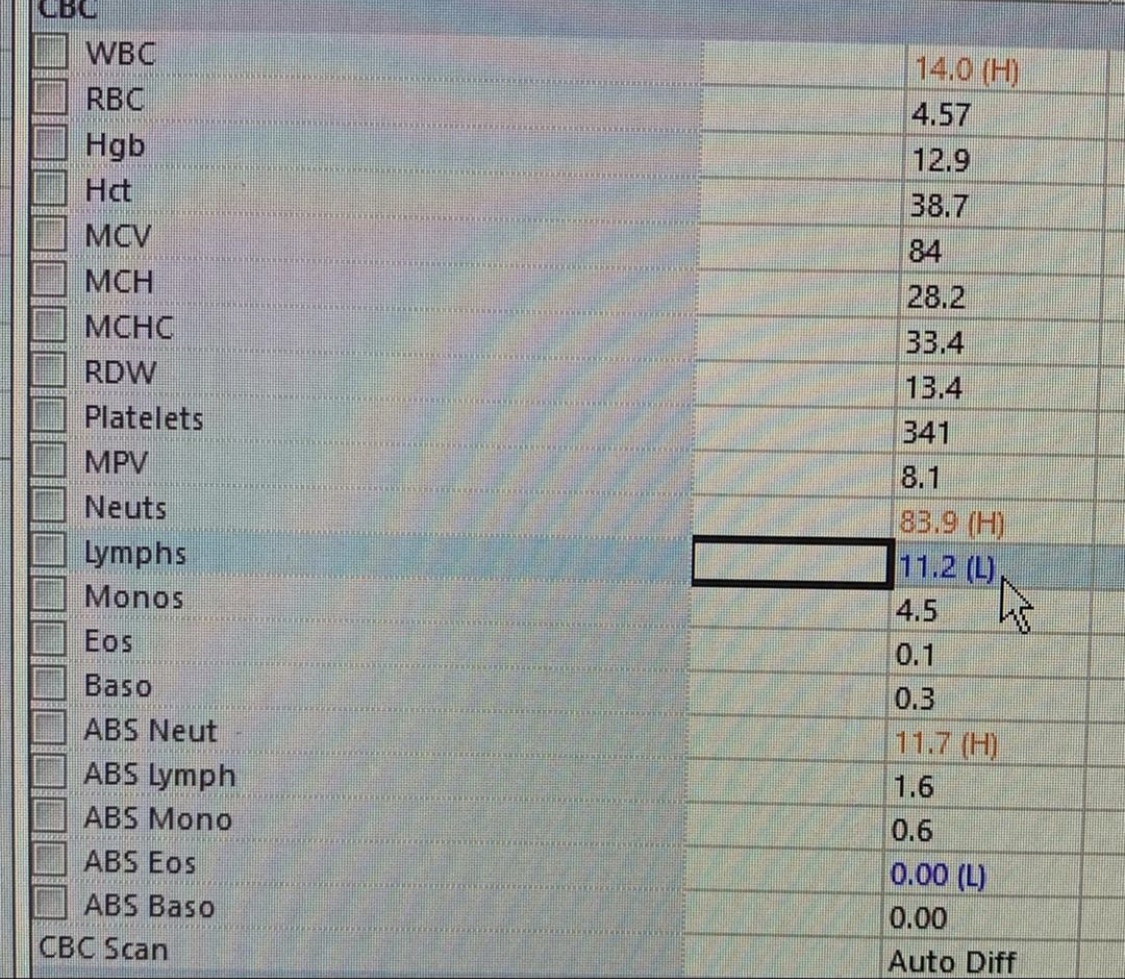How A Simple Blood Test (Lymphs) Helps Doctors Diagnose COVID19 and Predict Severity

[cs_content][cs_section parallax=”false” separator_top_type=”none” separator_top_height=”50px” separator_top_angle_point=”50″ separator_bottom_type=”none” separator_bottom_height=”50px” separator_bottom_angle_point=”50″ style=”margin: 0px;padding: 45px 0px;”][cs_row inner_container=”true” marginless_columns=”false” style=”margin: 0px auto;padding: 0px;”][cs_column fade=”false” fade_animation=”in” fade_animation_offset=”45px” fade_duration=”750″ type=”2/3″ style=”padding: 0px;”][x_author title=”About the Author” author_id=””][x_custom_headline level=”h2″ looks_like=”h3″ accent=”false”]How A Simple Blood Test (Lymphs) Helps Doctors Diagnose COVID19 and Predict Severity[/x_custom_headline][cs_text class=”cs-ta-justify”]Written by Dr. Larry, powered by Averpoint [/cs_text][cs_text]
[dropcap]“T[/dropcap]ake a look at these 3 pics: these are three examples of what we see in actual COVID19 patients, all positive. This is a CBC, or Complete Blood Count. At the top, WBC means White Blood Count, which can be elevated in infection. Just below that the Hgb and Hct are Hemoglobin and Hematocrit, which is how we check for anemia, or if the red blood cells are low, from blood loss, for example. About in the middle is Platelets (1).
But what I’ve highlighted is something unique to COVID19 patients that we see in a CBC that isn’t very common with other diseases or infections, it can often provide a clue that this is COVID19, because remember, while typical symptoms are cough, fever and body aches, everyone is different, and I’ve seen everything from vomiting and diarrhea to loss of smell/taste and stroke be COVID19. So when we see the LYMPHS are LOW, these days you ask yourself,
“Could this be COVID19?.”

It’s not 100% by any means, but LOW LYMPHS are often a blood finding for COVID19, which again: is somewhat unique. After seeing this on just about every COVID19 patient in NYC, I was catching it when I was back in California, and picking up some cases and COVID19 diagnoses that I might not have caught otherwise, that’s important right? Because those guys might have gone home and transmitted the disease to other people if they didn’t know.
What does “LYMPHS” mean?
It refers to Lymphocytes, which are a type of White Blood Cell (2). When we draw your blood, someone looks at it under a microscope and counts the types of white blood cells they see, including neutrophils, basophils, eosinophils, lymphocytes and monocytes. Normally, these white blood cell types are in balance. When there is a change in that balance, or their ratios, it can be a clue to what is going wrong. For example, in bacterial infection (like an advanced urine infection or bacterial pneumonia in the lung), I would expect to see neutrophils.
You might see eosinophils elevated with allergies. And sometimes, you see lymphs INCREASE in viral infection (3).
Interesting, right, because with COVID19, they decrease. Not only do LOW LYMPHS tip us off that someone may have COVID19 but if they are severely low (less than 1.5), that often means someone might be or get severely ill. One study showed less than 1.5 correlated with 3 times greater chance of ending up in the ICU and with kidney failure, for example (4).
How does the virus cause this?
We don’t know but there are some guesses or hypothesis (5).
1. The virus directly infects and kills T and B cells. If lymphocytes have the ACE2 receptor that CoronaVirus binds to in order to enter the cell, then T and B cells would be a target (6).
2. The cytokine storm, the body’s immune response, actually results in lowering lymphocytes (7).
3. The T and B cells simply get exhausted or used up in fighting the infection (8).
Interesting stuff, a lot of science behind a simple, common blood test, that doctors can use to help diagnose COVID19. Stay safe, take care of yourself always, and in this, please do your part.
You can check out my collection of evidence for this article on Averpoint. And if you’d like to check out more videos on COVID19, we do a CORONA WEEKLY UPDATE to keep you informed of the latest science, you can find those videos on my Youtube Channel.
References:
- https://www.medscape.com/viewarticle/933916
- https://www.medicalnewstoday.com/articles/320987
- https://labtestsonline.org/tests/complete-blood-count-cbc
- https://jintensivecare.biomedcentral.com/articles/10.1186/s40560-020-00453-4
- https://www.ncbi.nlm.nih.gov/pmc/articles/PMC7305732/
- https://www.nature.com/articles/s41392-020-0148-4
- https://onlinelibrary.wiley.com/doi/full/10.1002/cbin.11403
- https://www.cdc.gov/coronavirus/2019-ncov/hcp/clinical-guidance-management-patients.html
[/cs_text][x_gap size=”50px”][/cs_column][cs_column fade=”false” fade_animation=”in” fade_animation_offset=”45px” fade_duration=”750″ type=”1/3″ style=”padding: 0px;”][x_widget_area sidebar=”sidebar-main” ][/cs_column][/cs_row][cs_row inner_container=”true” marginless_columns=”false” style=”margin: 0px auto;padding: 0px;border-style: solid;border-width: 1px;”][cs_column fade=”false” fade_animation=”in” fade_animation_offset=”45px” fade_duration=”750″ type=”1/1″ style=”padding: 0px;”][cs_text]
Featured Content
[/cs_text][/cs_column][/cs_row][/cs_section][cs_section parallax=”false” separator_top_type=”none” separator_top_height=”50px” separator_top_angle_point=”50″ separator_bottom_type=”none” separator_bottom_height=”50px” separator_bottom_angle_point=”50″ style=”margin: 0px;padding: 45px 0px;”][cs_row inner_container=”true” marginless_columns=”false” style=”margin: 0px auto;padding: 0px;”][cs_column fade=”false” fade_animation=”in” fade_animation_offset=”45px” fade_duration=”750″ type=”1/1″ style=”padding: 0px;”][ess_grid alias=”featured_content”][/cs_column][/cs_row][/cs_section][/cs_content]





